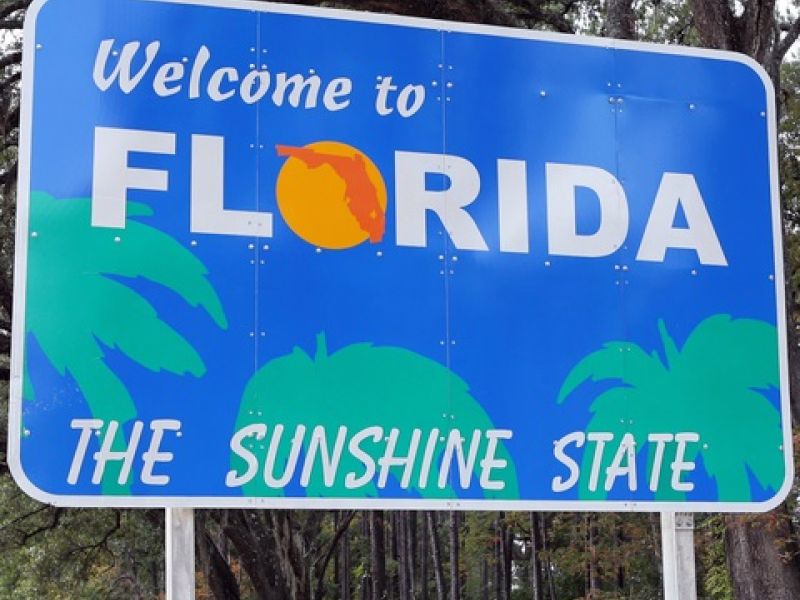Like many policies unleashed by Donald Trump, it’s been impossible to avoid the implications of tariffs. The levies placed on exports to America vary by country, but no-one is exempt, and many nations have had to strike deals to lower the cost. Indeed, a deal with China has reduced its own reciprocal tariffs on rare earth minerals, while Canada has suffered Trump’s ire after a political advert targeted the U.S. president.
None of this has been greeted with anything but concern by most businesses. Yet there might be a perverse logic – for all the short-term impact of tariffs, the intent is clearly to boost American manufacturing, and it’s possible that they could prompt a similar revival in countries all across the world.
The ripple effects of tariffs
The recent surge in tariff measures between the U.S. and China in particular illustrates the extent to which trade policy can unsettle the global economy. The U.S. has introduced sweeping “reciprocal tariffs” and other increased duties on Chinese imports, while China has responded with its own retaliatory measures. Many policies applied by China have also been applied to Europe, catching the continent in a problem not of its own making.
U.S. tariffs on Chinese goods are the highest in a century, while even small nations with trade deficits to the U.S. have been punished with strict tariffs. The World Trade Organisation (WTO) estimates that the crisis could reverse growth in global trade, dropping from an expected 2.7 % increase to about 0.2 % this year.
For anyone who relies on global supply chains, this has had an unavoidable effect. Firms in China have seen production paused and orders cancelled as U.S. tariffs bite, re-orienting to other markets or mothballing capacity altogether. At the same time, American consumers are grappling with huge hikes in import prices, with major conglomerates such as supermarkets only absorbing part of the shock for everyday items.
The case for local production
Much of the reason behind these tariffs comes down to protectionism, and the idea that too much manufacturing and production capacity is being ceded to countries like China. The power this grants them allows them to cut off access to key imports unless their political needs are met, potentially putting the interests of western powers at risk.
This was already forcing countries to seriously consider divesting from China even prior to Trump’s tariffs, and producing more products locally. While this has always butted up against higher costs from labour and materials, the genuinely unprecedented extent of the tariffs has changed this equation. Stability with higher fixed costs is starting to feel preferable to instability with lower, more variable costs.
On a basic level, tariffs raise the effective cost of importing goods from exposed countries. These costs narrow the gap between low-cost foreign production and pricier local manufacturing. This applies in the manufacturing of high-cost and high complexity items like cars or computer chips, but it also applies to local farmers, artisans, and even business services. Security concerns are also putting wind in manufacturers’ sails, with American politicians flagging the dangers of over-relying on one country for critical components, in case things like communication infrastructure are hacked into.
The result is an environment of punishing tariffs, but also one where businesses might be able to take advantage of the gaps that are emerging. If a business is willing to invest locally or regionally, it could find that government support is becoming more extensive—and that its products or services are suddenly a lot more competitively priced than they were a year ago.
How European businesses can take advantage of tariffs
In America, this drive to restore manufacturing jobs and diversify away from China is already well underway. Tech firms such as Intel and TSMC have pledged large investments in U.S. semiconductor plants to guard against possible interruptions in supply from Taiwan, and to respond to tariff and security pressures. At the same time, tariff pressures are compelling U.S. car manufacturers to bring production out of countries like Mexico and Canada, and back to the States.
For all the challenges they bring, tariffs could also be a gift in disguise for business in Europe—or at least those that are able to capitalise. Finding ways to produce or source products and materials locally can get a leg up on competitors tied into contracts, providing both a financial advantage and greater control and flexibility.
Article: The best entrepreneur visas in Europe
The European Union has been actively supporting this shift, with funding and incentives specifically designed to strengthen the continent’s industrial base. The EU’s Green Deal Industrial Plan and European Chips Act are both designed to bring critical industries back to Europe, and make the EU more self-sufficient in the process.
For a small or medium-sized business, that can mean new opportunities to access grants, partnerships, and talent that weren’t available a few years ago. This means not only harnessing the existing benefits of EU membership—ready access to talent, or the EU single market—but also being able to reduce shipping delays and costs, and check goods in person.
The difficulty is obviously sourcing those suppliers, with some items being produced or manufactured in limited quantities locally. But supply tends to follow demand, and more businesses looking to source locally will inevitably drive production. By starting a business in the EU, you also have the benefit of access to dozens of markets, meaning that manufacturing capacity isn’t limited to just the country you’re based in.
Europe’s local advantage
Long before Trump’s tariffs, the Covid pandemic and Ukraine war have shown how volatile modern supply chains can be, and the value of reducing reliance on other countries. As a result, the EU and its member states have been acting to reduce this reliance for some years, with policies that are starting to bear fruit.
In some sectors, local industry has been waiting for this kind of windfall. In Germany, for instance, the country’s manufacturing sector had been facing a bit of a slump. The fortunes of the automotive and machinery industries could be set to change if they are able to absorb production returning from Asia. Germany’s post-Covid Recovery and Resilience Plan meanwhile is supporting companies investing in energy-efficient production and local supply chains.
In France and Italy, meanwhile, artisanal and high-value products could benefit from growth to other EU nations, and to other countries with lower tariffs. The French government has provided funding for green technology and automation, while broader EU schemes such as Horizon Europe are being used to encourage innovation, and reduce reliance on imports.
Elsewhere, countries such as Poland, Slovakia, and Romania all offer competitive labour costs and growing technical expertise, making them potentially attractive alternatives to suppliers in China. What tariffs have done, inadvertently, is make these regional strengths more appealing, encouraging European firms to rediscover the value of regional partnerships.
Embracing the challenge
Of course, it isn’t as simple as just starting a business in Europe and riding the wave. Production in Europe often costs more in wages and materials. But those higher fixed costs are being balanced by the extent of tariffs, and the security of knowing that your supply chain won’t be upended overnight. And with advances in automation, renewable energy, and digital tools, the cost of starting a business or scaling production in Europe is not as high as it once was.
Article: Start a Business in France in 8 Steps
Opportunities to capitalise on these changes are already presenting themselves to startups. A growing number of European tech founders are pursuing what’s been dubbed the ‘resilience economy’, offering digital tools to help make supply chains more transparent, promote circular manufacturing, or make logistics more efficient, all things that could make European manufacturing more competitive.
There’s also a growing appetite among investors for firms that can demonstrate strong, localised operations. European venture capital and private equity funds increasingly prefer companies that show they can be durable as well as profitable, with less focus on the kind of rapid growth chased by American tech firms. And the companies best positioned to strengthen European supply chains—the tech startups—are also benefitting from a booming European tech scene and great infrastructure, something we’ve written about extensively.
Tariffs are rarely popular, and the overall impact on businesses and the global economy is likely to be negative, at least for the time being. But like any crisis, they also present an opportunity for innovation, and maybe one for renewal. For entrepreneurs in Europe, there’s the possibility that the Trump tariffs herald a shift back to more local production and manufacturing—something that stands to be capitalised on with the right execution.







